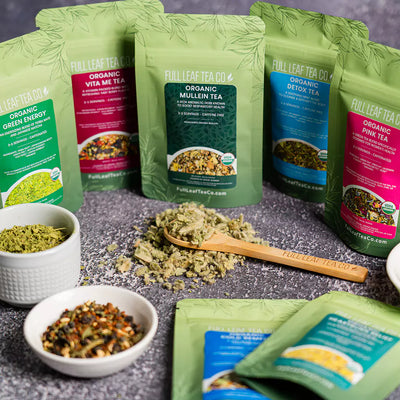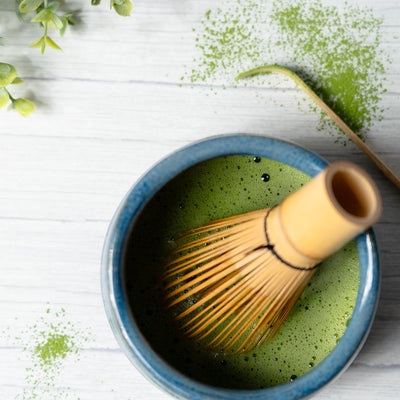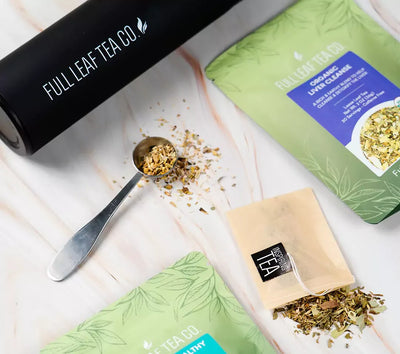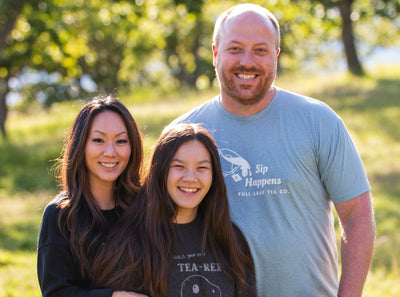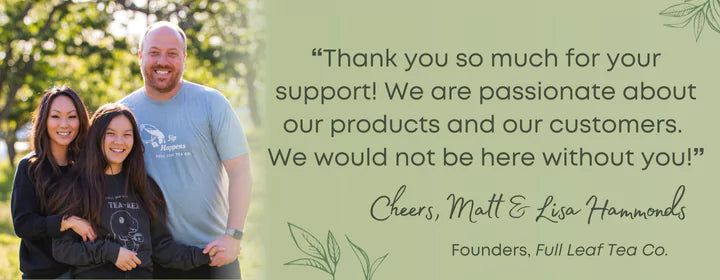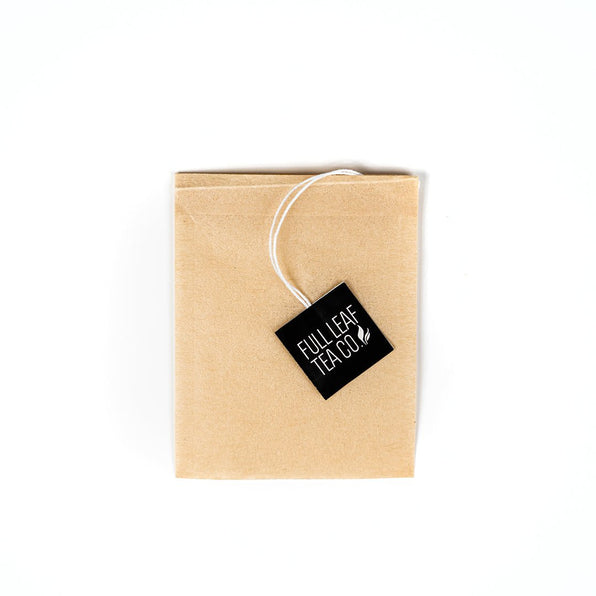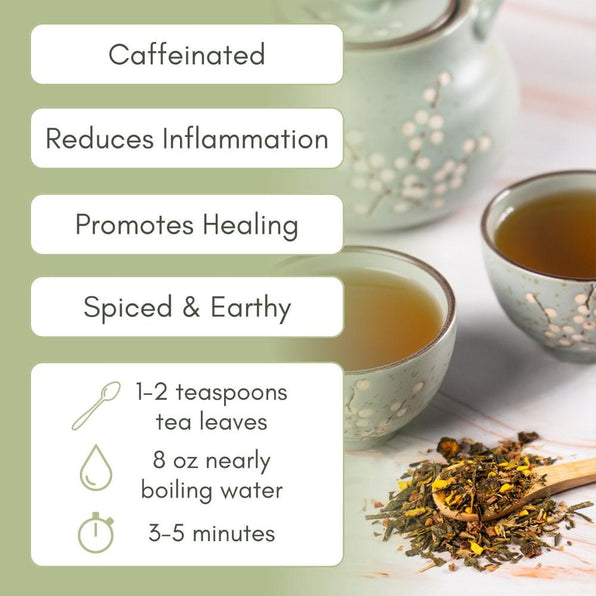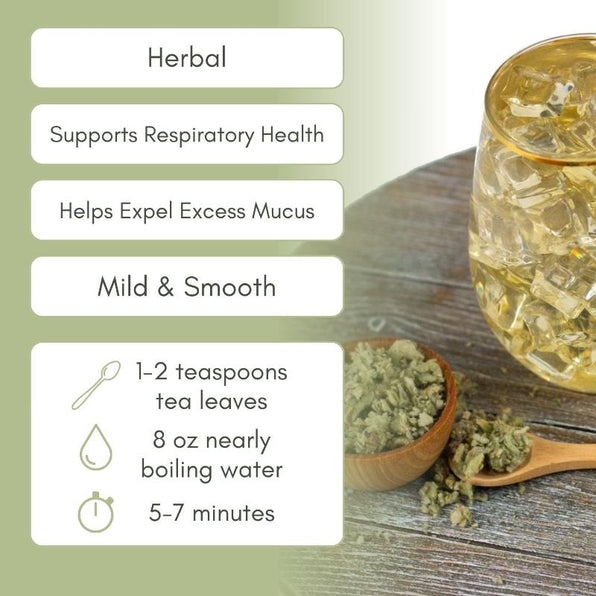This question goes hand in hand with “can I boil tea leaves” or “can I pour boiling water over tea” – it’s all about brewing instructions. Many are so worried when they first try loose leaf tea about getting things “right”. While I’ll go into some technicalities on this and explain the “ideal” way in the industry to prepare each tea, it’s important to keep something in mind: there’s no “right” way to brew tea.
Tea is right if it tastes good and taste is subjective. Experiment, use trial and error, and find a way to enjoy the tea. This means you can even add things to it like milks, creamers, sweeteners, or even alcohol. Tea is meant to be enjoyed and there’s a wide variety of ways to do that.
Tea Steeping Lengths
So firstly, the length of steeping. If you’re wanting a generally good rule of thumb, loose leaf can be enjoyed by steeping for 2-8 minutes if brewing hot. Conversely, prebagged teas tend to dump their contents and steep within 1 minute and get bitter if left in longer than that. A good, visual, rule of thumb to go by is: wait until the leaves completely unfurl. If you’re brewing herbal tea that’s going to be more difficult because there likely aren’t any leaves, so you’ll need to go by taste instead.

For your very first cup of tea, try a couple sips of tea at the 2 minute mark, 3, 4, etc. onto 8 minutes. You should do this for every new variant you try. For instance, I enjoy Liver Cleanse after only 2 minutes, I enjoy Skinny Natural after 3 minutes, I enjoy Herbal Earl and Kingston Earl Grey after 4 minutes, and I enjoy most other teas after 5 minutes. I’m not a 6-8 minute steep drinker. You figure out what your preferences are as you go, so enjoy the experience, keep a journal if you feel like it, and find out how you enjoy each tea best.
Industry standard suggests 1 teaspoon of tea to 8 ounces of hot water. For steeping times, the reason 2-8 minutes is given, even though it’s such a wide range, is due to the different types of tea. Most will recommend that White and Green teas be steeped for the shortest amount of time to avoid bitterness (about 2-3 minutes).
For black tea, normally 3-5 minutes is recommended. Again, due to the risk of bitterness, it’s not recommended to exceed that time. For oolong tea, especially Qilan which is rolled a little tighter, we recommend around 5 minutes, not to exceed 7 minutes. If you want it stronger, we recommend adding more leaves rather than steeping longer. (An exception for this is re-steeping, but that’s an entirely different subject.)
Herbal tea basically can’t be over-steeped (unless you’re sensitive to certain ingredient tastes like rooibos, licorice, or lemon peel, which are the most common sensitivities). So, you really have to try these ones at each stage. To get the true taste of all ingredients, we recommend a 5-7 minute steep on our herbal teas.
Steeping Temperatures

For steeping at the “ideal” temperature, you can follow this guide.
Black tea and Rooibos teas are the only ones that can really withstand boiling (at 212°). This is why herbal teas that are not delicate are normally brewed with boiling water, same as black teas. So, while boiling water can be poured over tea, normally only black tea and certain herbal teas can withstand this without a flavor change for the worse. (normally bitter, burnt, or just bland. If the tea tastes bland, it could be the leaves were brewed too hot).
This sort of answers the question “can I boil tea leaves”, except some people will make stove top tea and are genuinely curious if it’s okay to have the leaves in the pot while it’s brought to a boil. The answer is yes! One, if it tastes good to you, go for it. Two, this is actually the traditional method of making chai tea and numerous herbal remedies is to just boil them over a stove (or even more traditionally – a fire or range).
When boiling tea leaves though, it should only be done with black or rooibos tea. Also, as per traditional chai tea: ginger, cinnamon, cardamom, and cloves are all perfectly hardy enough to be boiled. I personally love brewing Cold Remedy over the stove, then just using a strainer as I pour it into each cup (because when I’m making a full pot of it, everyone wants some). The sifters we have are the perfect size to pour into a cup, whereas if I use my kitchen strainer, I may be pouring tea over my counters.
You might ask why you can’t put other tea types on stove top and just keep it from boiling. The issue there is control. While the water is heating in a pot, depending on the kind of stove you’re cooking on (gas, electric, propane), you can have inconsistent heat, cold spots, etc. that make it difficult to accurately gauge just what the true temperature of the water is. If you have a fancy rapid boiler with temperature choices, this will be the easiest way.
If you’re working with a pot on the stove or with a rapid boiler, the easiest way to steep the tea at “ideal” temperatures is to get the water to just short of boiling, then let it stand to cool. You can use a thermometer to gauge the temperature after it has sat for 2 minutes, 3 minutes etc. Then use the water once it’s reached the proper temperature.

